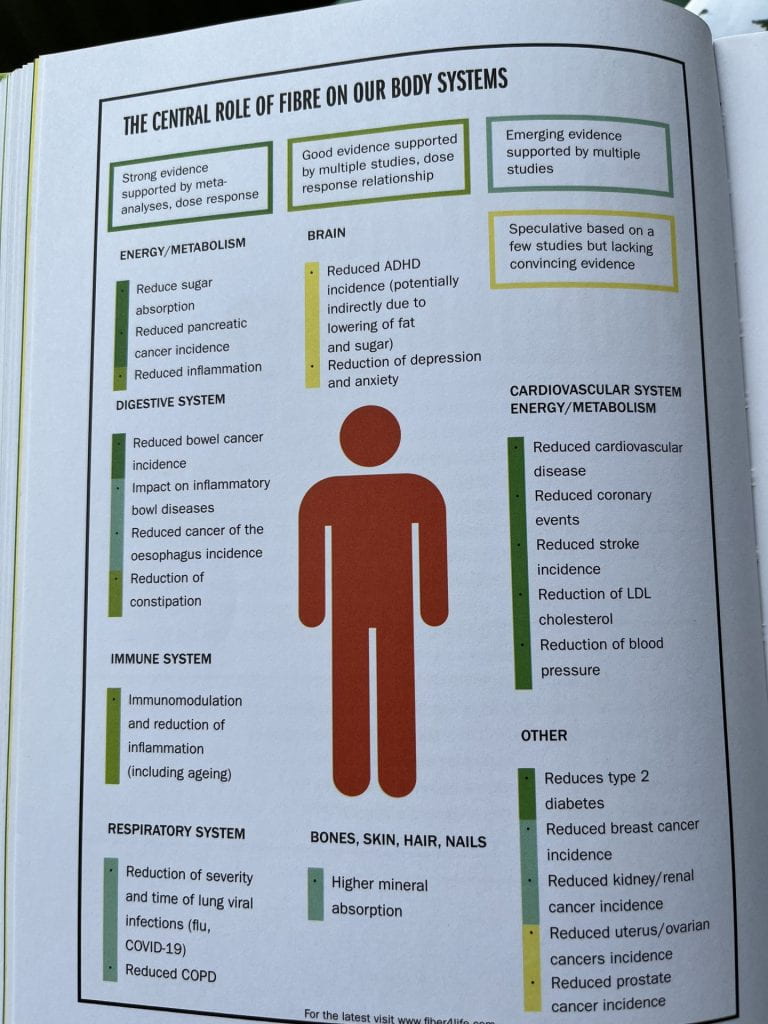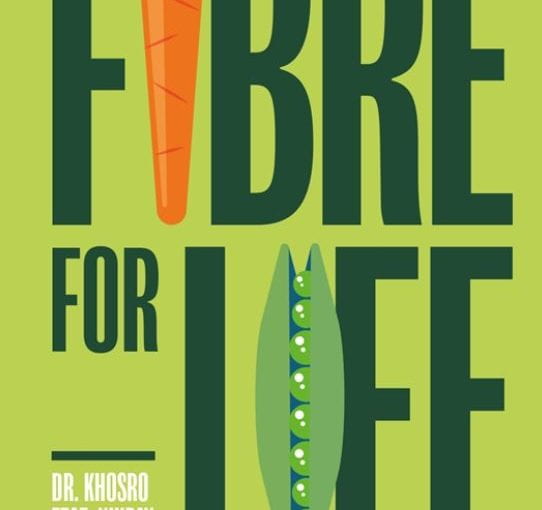This is a book that really focuses on the why we should eat more fibre with reference to up-to-date research in a compelling way and in ways that I hadn’t thought about.
There are many things that I liked about this book: the three strategies to add up to 10 years to your life, the infographics that explain ideas and data clearly, the notion that dieting doesn’t work but adding fibre to your diet will work, that fibre intake is essential in feeding our gut biome and that it is short and easy to read.
There are so many reasons why we should all eat more fibre – up to 30g+ a day when most of us are more like 12g a day – and I am not going to list all of them but the way of thinking about the ration of sugar to fibre or fat to fibre in a food was new to me. Any ratio lower than 4:1 (sugar:fibre) is healthy so veg are 1:3, fruit 4:1 and certain snacks 20:1. I have to admit to getting a bit confused when the author then talks about % of fibre in a food.
Damning sugar will not solve our obesity problem – but celebrating fibre will.
p41
Not only does the author focus on individuals but also schools and governments and what they could do to help the problem and that is the first time I have seen this sort of guidelines in a book about fibre.
The main roles of fibre in our gut is for bulking, viscosity and fermentation and each of these has a different purpose and it is the fermentation role that has the most activity in terms of what it does for us. There is also some evidence that higher fibre consumption is linked to reduced rates of aging at the chromosomal level due to inflammation and oxidative stress. It all sounds like a winner to me!
If you are looking for lots of recipes this is not the book for you, although there are some. What there is is a plan for gradually increasing the amount of fibre in your diet:

Stage 1 – this focuses on subtle increases such as eating seeds or nuts 20-40 minutes before a meal.
Stage 2 – this phase combines food, physical activity and sleep (the three essential strategies which also includes fun).
Stage 3 – the same as stage 2 but making more effort to increase the fibre eaten.
Khosro’s personal top ten high-fibre foods to include are
- Chia, sesame and flax seeds (27% fibre)
- Barley (17%)
- Popcorn (15%) Pop your own
- Herbs (7-40%)
- Almonds (12%)
- Butter beans (12%)
- Artichokes and leeks (10%)
- Avocados (9%)
- Passion fruit (9%)
- Raspberries (8%)
This book appeared in the Fortnum and Mason shortlist for a debut book about food and I can see why.
